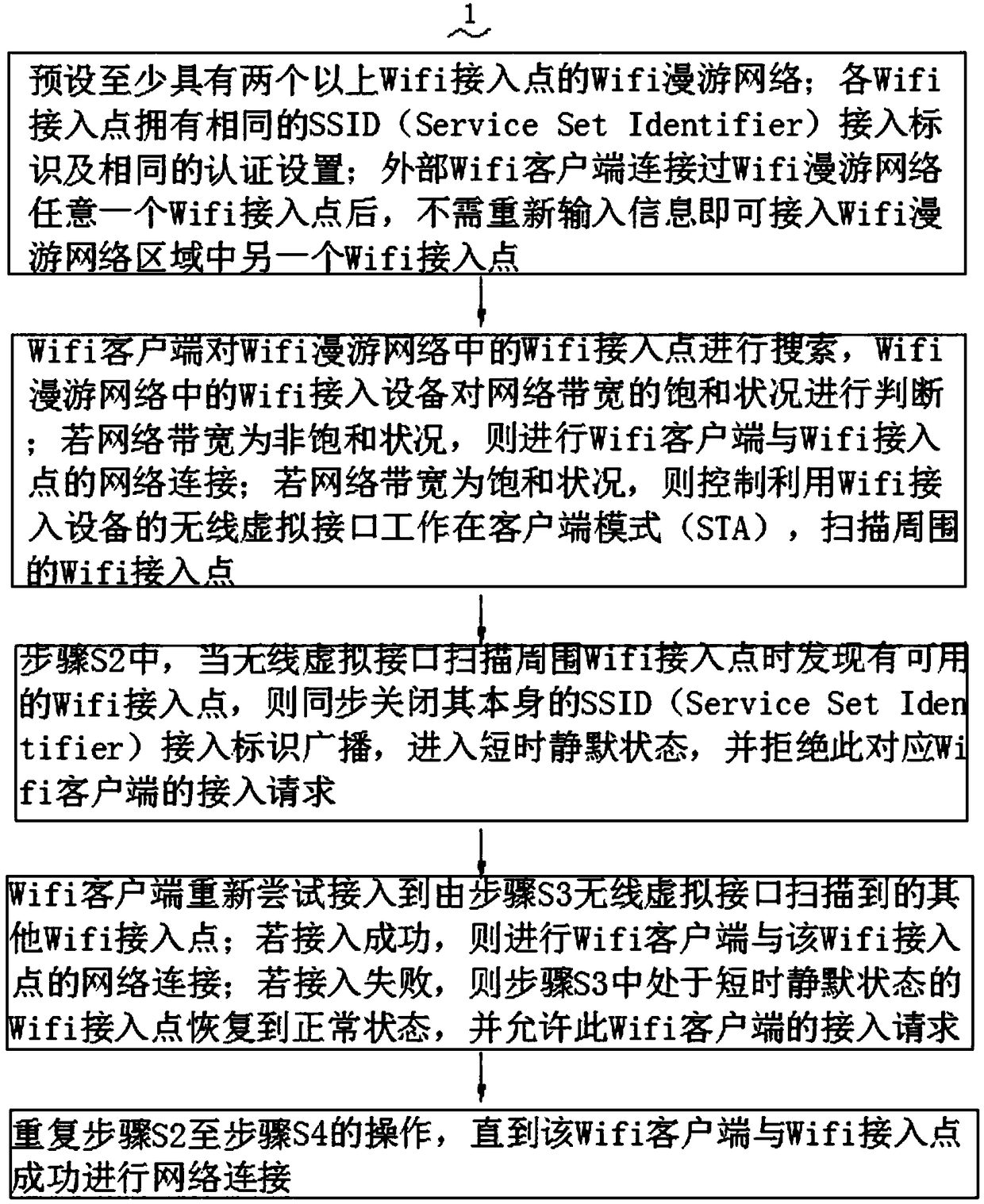Network load balancing method applied to WiFi roaming area
A technology of network load and balancing method, which is applied in the direction of network traffic/resource management, access restriction, electrical components, etc., which can solve problems such as heavy equipment network load, reduced user experience on the Internet, and low network bandwidth utilization, and achieve network load Balance and improve the effect of network bandwidth utilization
- Summary
- Abstract
- Description
- Claims
- Application Information
AI Technical Summary
Problems solved by technology
Method used
Image
Examples
Embodiment 1
[0041] A method for performing network load balancing when roaming between WiFis. The first step of this method is to support WiFi roaming areas. All WiFi access nodes have the same access settings, so that WiFi clients can connect to one of the WiFi access points. After the node, you can access another node in the WiFi roaming area without re-entering information;
[0042] In the second step, when the WiFi client enters the WiFi roaming area and prepares to connect to the WiFi access point (AP), if the network bandwidth of the WiFi access device has entered a saturated state, it will use the wireless virtual interface to work in the client mode (STA), To scan the surrounding AP;
[0043] In the third step, when the wireless virtual interface scans that there are available access points in the surrounding WiFi roaming area, it turns off its own access identification (SSID) broadcast, enters a short-term silent state, and rejects the access request of the WiFi client;
[0044]...
Embodiment 2
[0047] In the method for performing network load balancing when roaming between WiFis described in Embodiment 1, the first step is that in the wireless roaming network, according to the characteristics of the roaming network, all wireless access points have the same access ID and Certified configurations, and all wireless access points are deployed in adjacent locations to extend network coverage. After the wireless client accesses the roaming network, it can connect to other wireless access points by recording the login information.
Embodiment 3
[0049] The method for performing network load balancing when roaming between WiFis described in Embodiment 1, in the second step, a wireless client STA1 that has been connected to the wireless roaming network moves to the wireless access network of the wireless roaming network Click the wireless coverage area of AP1, and assume that STA1 is the closest to AP1; at this time, STA1 automatically connects to AP1, and the wireless device AP1 judges whether it is in a saturated state. This saturated state is based on the number of client accesses and the current data flow of the network for a period of time , get a network saturation value through weighted calculation, and set a threshold based on experience; when the network saturation value is greater than the threshold, the wireless access point scans and detects the surrounding by setting another virtual interface as the client STA mode The internet.
PUM
 Login to View More
Login to View More Abstract
Description
Claims
Application Information
 Login to View More
Login to View More - R&D
- Intellectual Property
- Life Sciences
- Materials
- Tech Scout
- Unparalleled Data Quality
- Higher Quality Content
- 60% Fewer Hallucinations
Browse by: Latest US Patents, China's latest patents, Technical Efficacy Thesaurus, Application Domain, Technology Topic, Popular Technical Reports.
© 2025 PatSnap. All rights reserved.Legal|Privacy policy|Modern Slavery Act Transparency Statement|Sitemap|About US| Contact US: help@patsnap.com

